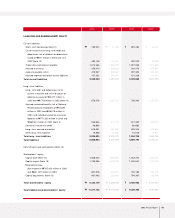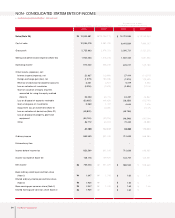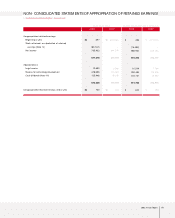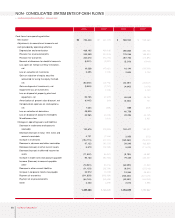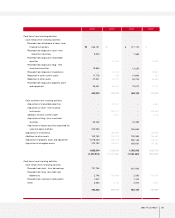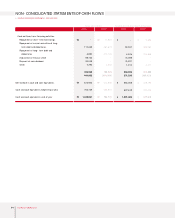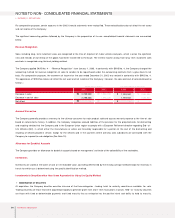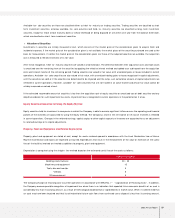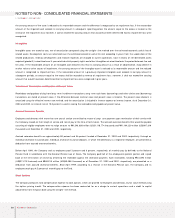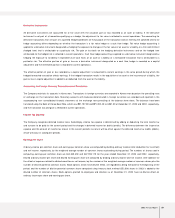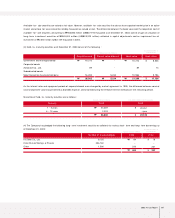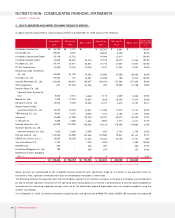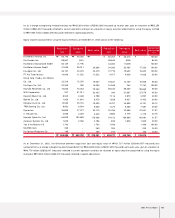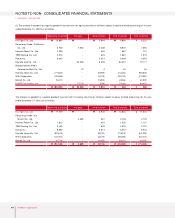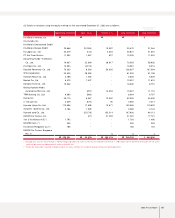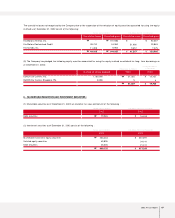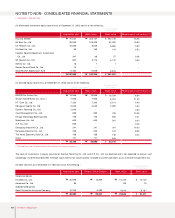Kia 2003 Annual Report Download - page 58
Download and view the complete annual report
Please find page 58 of the 2003 Kia annual report below. You can navigate through the pages in the report by either clicking on the pages listed below, or by using the keyword search tool below to find specific information within the annual report.
NOTES TO NON-CONSOLIDATED FINANCIAL STATEMENTS
▶DECEMBER 31, 2003 AND 2002
58 Kia Motors Corporation
the carrying amount of the asset is reduced to its recoverable amount and the difference is recognized as an impairment loss. If the recoverable
amount of the impaired asset exceeds its carrying amount in subsequent reporting period, the amount equal to the excess is treated as the
reversal of the impairment loss; however, it cannot exceed the carrying amount that would have been determined had no impairment loss were
recognized.
Intangibles
Intangible assets are stated at cost, net of amortization computed using the straight-line method over the estimated economic useful lives of
related assets. Development costs are amortized over the estimated economic useful life (not exceeding 3 years) from the usable date of the
related productions. Ordinary development and research expenses are charged to current operations. Cost in excess of net identifiable assets
acquired (goodwill) is amortized over 5 years and industrial property rights and other intangibles are amortized over the period between five and
ten years. If the recoverable amount of an intangible asset becomes less than its carrying amount as a result of obsolescence, sharp decline in
market value or other causes of impairment, the carrying amount of the intangible asset is reduced to its recoverable amount and the reduced
amount is recognized as impairment loss. If the recoverable amount of a previously impaired intangible asset exceeds its carrying amount in
subsequent periods, an amount equal to the excess shall be recorded as reversal of impairment loss ; however, it shall not exceed the carrying
amount that would have been determined had no impairment loss were recognized in prior years.
Valuation of Receivables and Payables at Present Value
Receivables and payables arising from long-term installment transactions, long-term cash loans (borrowings) and other similar loan (borrowing)
transactions are stated at present value, if the difference between nominal value and present value is material. The present value discount is
amortized using the effective interest rate method, and the amortization is included in interest expense or interest income. As of December 31,
2003 and 2002, an interest rate of 10.0 percent is used in valuing the receivables and payables at present value.
Accrued Severance Benefits
Employees and directors with more than one year of service are entitled to receive a lump-sum payment upon termination of their service with
the Company, based on their length of service and rate of pay at the time of termination. The accrued severance benefits that would be payable
assuming all eligible employees were to resign amount to ₩1,340,068 million (US$1,118,774 thousand) and ₩1,194,229 million (US$997,019
thousand) as of December 31, 2003 and 2002, respectively.
Accrued severance benefits are approximately 58 percent and 56 percent funded at December 31, 2003 and 2002, respectively, through an
individual severance insurance plan. Individual severance insurance deposits, in which the beneficiary is a respective employee, are presented as
deduction from accrued severance benefits.
Before April 1999, the Company and its employees paid 3 percent and 6 percent, respectively, of monthly pay (as defined) to the National
Pension Fund in accordance with the National Pension Law of Korea. The Company paid half of the employees’6 percent portion and is paid
back at the termination of service by offsetting the receivable against the severance payment. Such receivables, totalling ₩44,892 million
(US$37,479 thousand) and ₩48,018 million (US$40,088 thousand) as of December 31, 2003 and 2002, respectively, are presented as a
deduction from accrued severance benefits. Since April 1999, according to a revision in the National Pension Law, the Company and its
employees each pay 4.5 percent of monthly pay to the Fund.
Stock Options
The Company computes total compensation expense to stock options, which are granted to employees and directors, by fair value method using
the option-pricing model. The compensation expense has been accounted for as a charge to current operations and a credit to capital
adjustments from the grant date using the straight-line method.



